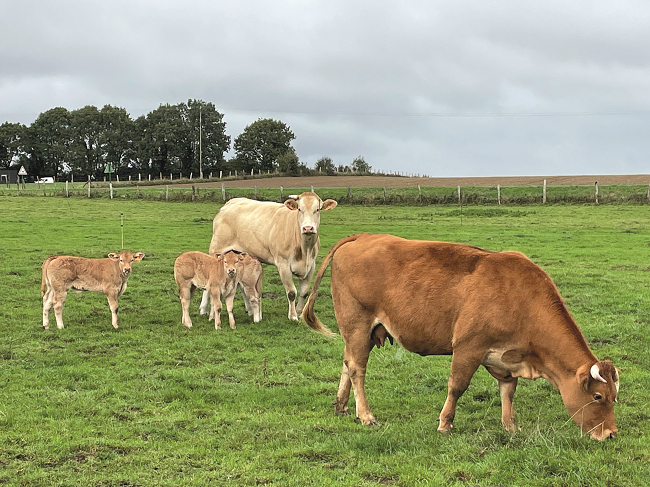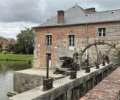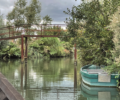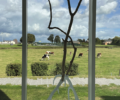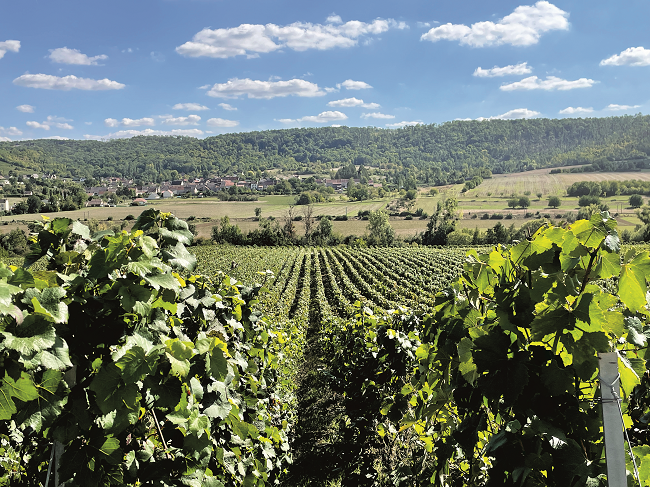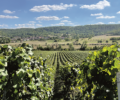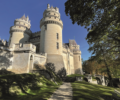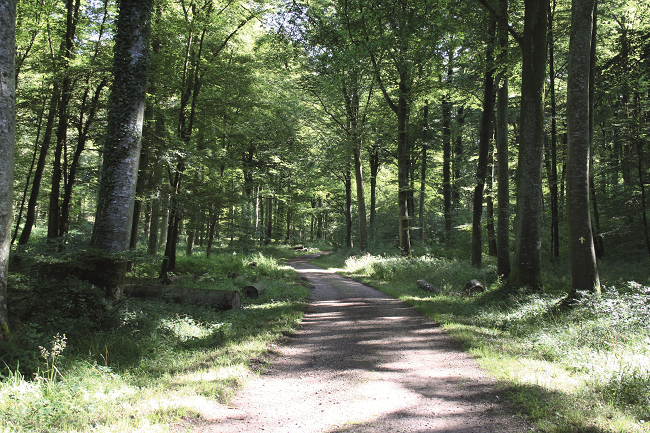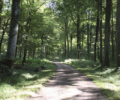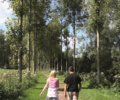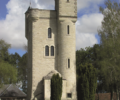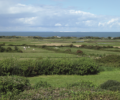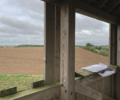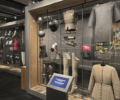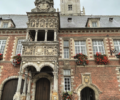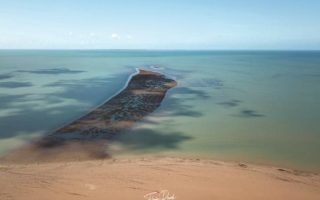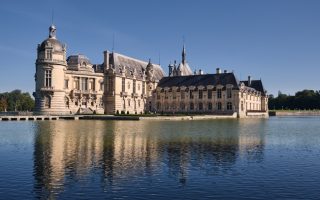The Green Heart of Hauts-de-France
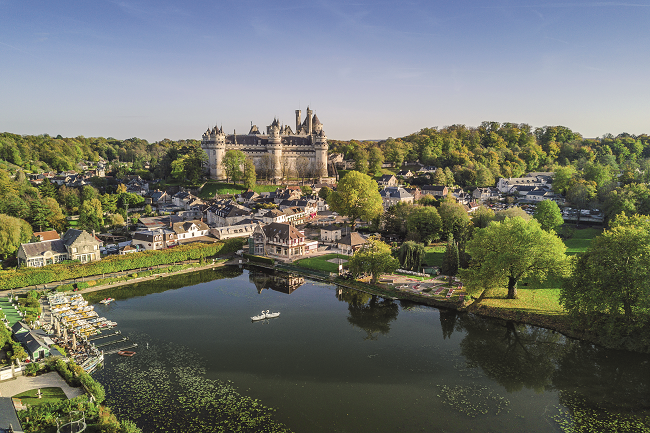
Take a road trip through the green spaces of northern Hauts-de-France and discover a landscape that is as diverse as it is fascinating.
For a village that barely numbers 1,500 residents, Maroilles has a surprising amount to offer: a broad main street lined with houses of red brick and blue stone, an historic water mill, and a pretty village green complete with bandstand and 18th-century Arc de Triomphe.
Life moves at a gentle pace here in the heart of the Avesnois Regional Nature Park, an area of tree-lined meadows, small farms and villages in the northeast corner of Hauts-de-France. And whilst Maroilles may be modest in size, this pretty village in the Nord department is famous with foodies throughout France. Love a cheeseboard? Then look out for the distinctive square shape and rich red rind of Maroilles cheese, one of the smelliest but tastiest in France. Far from being grey and industrial as many French southerners imagine, northern France revels in vast areas of green space. So finding myself with an early autumn week to spare, I plan a circuit from the sandy beaches of the Channel coast to the bocage pasturelands of the Avesnois, the Champagne vineyards of the Marne Valley and the lush landscape of the Somme and the Seven Valleys.
And to start my tour in green mode, I travel beneath the English Channel to Calais with Eurotunnel Le Shuttle, driving my car onto an electric train for the 35-minute journey. With no air pollution, ultra-low levels of greenhouse gas emissions and no disruption to marine life, it’s the best way to keep my carbon footprint low.
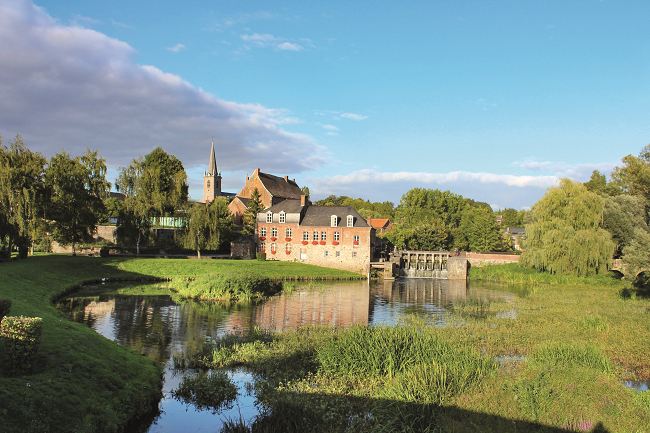
The tranquil village of Maroilles © shutterstock
Audimarois to the Avesnois
Head out of Calais and you are soon in the Parc Naturel Régional des Caps et Marais d’Opale, one of four protected natural parks, or PNRs, in the region. Strike off to the south and the twin headlands of Cap Blanc-Nez and Cap Gris-Nez give way to Pas-de-Calais‘s vast rolling fields of cereals. Drive east and you’ll arrive at an area of marshland around Saint-Omer, famed for its market gardening, especially cauliflowers, chicory and carrots.
Stop off at the fascinating Maison du Marais for the full story of this UNESCO-listed biosphere where the postman still delivers by boat to island homes, and relax on a guided excursion by electric boat. Amongst the rich flora and fauna, I’m thrilled to spot the azure flash of a kingfisher, not once but twice.
Next morning I skirt Lille and the former mining area around Lens, now listed by UNESCO as a beacon of industrial regeneration for its natural spaces and heritage attractions. Two hours after leaving Saint-Omer, I arrive in the Avesnois PNR which stretches from the fortified town of Le Quesnoy in the west to the tranquil lake of Val Joly in the east, the largest lake north of Paris.
Enjoy a flavour of the Avesnois not just in Maroilles cheese, but in cider, apple juice and craft beers. And there’s culture here, too, in the tranquil countryside. MusVerre at Sars-Poteries is an extraordinary museum and creative workshop celebrating the industry that thrived here from 1801 to 1937. Purpose-built in sober colours with clean lines and farmland views, MusVerre traces the history of local glassmaking, but also champions the work of contemporary artists. Don’t miss the bousillés, one-off pieces produced by workers for family and friends – the glassworker’s art at its most imaginative.
Marne Valley
From the Avesnois, I head south through Aisne for a welcome return to the delightful hilltop town of Laon. Wander the narrow streets of the historic quarter, climb the cathedral tower, and join a guided tour of the citadel’s underground passages. If time permits, head up the green slopes of La Cuve Saint-Vincent for a unique panorama of town and country.
South of Laon, the landscape changes again at Château-Thierry, where champagne vineyards line the south-facing slopes of the Marne Valley. Some 500 small winegrowers work in Aisne alone and, together with the larger Pannier champagne house, they account for 10% of all champagne production. Book ahead to avoid disappointment if, like me, you want to both try and buy. For an elegant overnight stay, book in at nearby Château de Picheny where your warm welcome begins with a complimentary glass of bubbles amongst the antique furniture, the perfect apéro before a table d’hôte dinner more worthy of a gastronomic restaurant than a three-suite guesthouse.
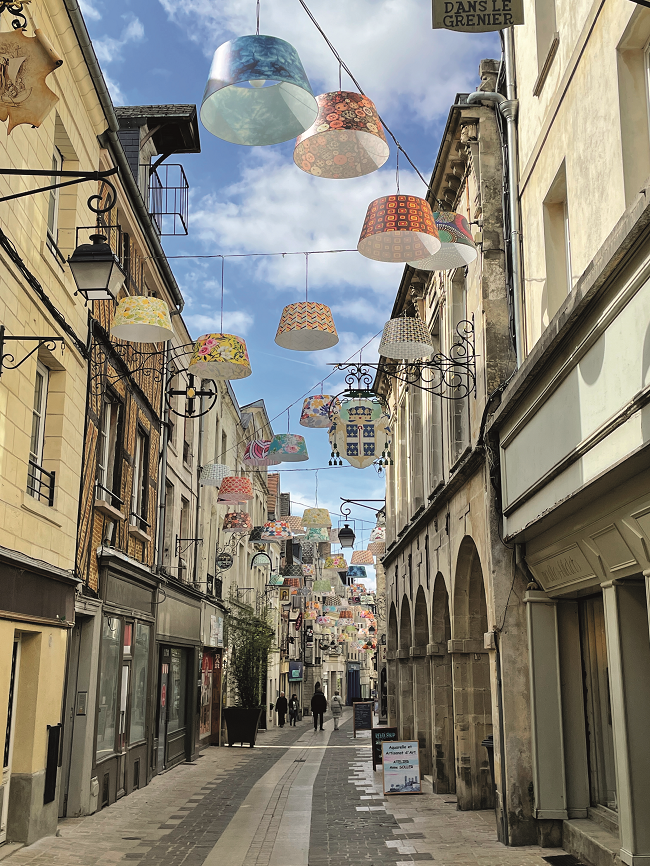
Laon © Gillian Thornton
Royal forests
The next day I turn northwest into Oise, swapping the serried rows of vines for dense woodland and two of the best-known châteaux north of Paris.
My first stop is Pierrefonds, a medieval castle looked after by the Centre des Monuments Nationaux. Commissioned in 1393 by the Duke of Orléans, this hilltop stronghold was partially dismantled in 1617 under Louis XIII after a siege, and the ruins later bought by Napoleon I. But it was Napoleon III who commissioned architect Eugène Viollet-le-Duc to rebuild it in the 1850s. His fanciful restoration took almost 20 years to complete and whilst architectural authenticity may have been somewhat stretched, Viollet-le-Duc’s ‘Cinderella’ castle is a glorious testament to the power of creative imagination. Don’t miss the light show amongst the faux tombs and statues in the cellar.
From Pierrefonds, I take a detour in the Compiègne Forest to explore the heritage village of Saint-Jean-aux-Bois before pitching up at Compiègne, just 10 miles from Pierrefonds, and an altogether different Napoleonic castle. Built for Louis XV, the Château de Compiègne became the residence of Napoleon I and an Imperial entertainment venue for Napoleon III. Allow a full day to explore its sumptuous state apartments, the Museum of the Second Empire and the National Car Museum. Napoleon III’s wife, Eugenie, loved to walk in the Compiègne Forest, but an equally delightful way to enjoy the tranquil woodland avenues and château views is on horseback. No previous experience is necessary for a magical afternoon astride a Henson, a breed of small, sturdy horses from the Baie de Somme, starting from the Pôle Équestre riding centre.
Seven Valleys
Homeward bound, I continue northwest into the Somme department where memorials, monuments and museums to the Great War stand proud in peaceful rolling countryside, each one worthy of a visit: Thiepval and Péronne, the Lochnagar Crater, the Ulster Tower and many more. And at the heart of it all is Amiens, regional capital and a must-see, not just for its stunning Gothic cathedral and old quarter, but for Les Hortillonnages, an area of market garden plots divided by navigable waterways and accessible to all on guided boat tours.
My route passes close to the Forest of Crécy where English forces devastated French troops in 1346, before I slip seamlessly back into Pas-de- Calais and the lush Seven Valleys, now marketed to visitors as the Vallées d’Opale.
Inland from Le-Touquet-Paris-Plage on the Opal Coast, this undulating area of farmland and river valleys is one of the department’s best-kept secrets. Take a canoe excursion on its two main rivers, the Canche and the Authie, or enjoy a leisurely ramble through field and forest. Either way, you will be rewarded with breathtaking scenery and tranquillity.
The historic market town of Hesdin is worth a stop too, built as a strategic fortified town in the 16th century. You can’t miss the grand galleried porch on the Town Hall, but not all Hesdin’s treasures are obvious, so call first at the Tourist Office for the town guide. And if you can’t resist a floral display, stop off at nearby Boubers-sur-Canche where the whole community pulls together with public plantings and private gardens that provide colour, shape and interest throughout the year.
With time for just one more visit before my return trip on Le Shuttle from Calais, I choose Azincourt – or Agincourt, thanks to a mispronunciation by one of Henry V’s English knights. The splendid village museum was recently revamped as Azincourt 1415 and the story of the epic battle is graphically told through interactive exhibits and videos. But most impressive for me is the battlefield itself, still an open field more than 600 years after Henry’s small English army devastated the cream of French nobility in the October mud. Walk, drive or cycle the perimeter, and do stop at the viewing tower. Six centuries of agriculture may have erased the traces of medieval warfare, but it is easy to imagine the sights and sounds of the battle in this unspoilt rural setting. I just can’t help wondering what Viollet-le-Duc would have made of it all.
From France Today magazine
Lead photo credit : The Pierrefonds castle © shutterstock
Share to: Facebook Twitter LinkedIn Email
More in Hauts-de-France, nature, north of France, roadtrip
Leave a reply
Your email address will not be published. Required fields are marked *

